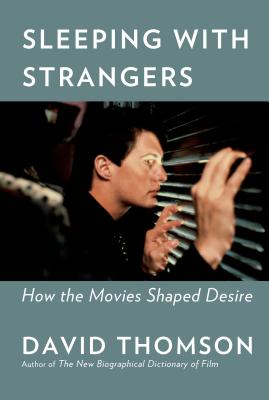 Sleeping with Strangers: How the Movies Shaped Desire
Sleeping with Strangers: How the Movies Shaped Desire
by David Thomson
Knopf. 352 pages, $28.95
DAVID THOMSON is one of our most invigorating and thought-provoking writers on film history. He’s also highly prolific, having penned more than thirty books on everything from A Biographical Dictionary of Film to an entire volume dedicated to Nicole Kidman and, my favorite, The Moment of Psycho: How Alfred Hitchcock Taught America to Love Murder.
Thus I was eager to crack open his latest book, Sleeping with Strangers: How the Movies Shaped Desire. Indeed I had heard that Thomson was working on an epic exploration of queer figures within cinema and their considerable influence. That trajectory, as it turns out, got sidelined as he was writing and researching the book: The #MeToo movement exploded, and the author found himself caught up in analyzing some of the most sexually compelling images of both men and women, and how they shaped his own desires, as well as our collective hang-ups about sexuality and gender.
Thomson points out that Freud published his most influential volume, The Interpretation of Dreams, in 1899, which was four years after the Lumière Brothers began screening their work in Paris. Thus the birth of cinema is caught up in psychoanalysis, and film theory as we know it owes a great deal to Freud.
Matthew Hays is co-editor (with Tom Waugh) of the “Queer Film Classics” book series (Arsenal Pulp Press).






